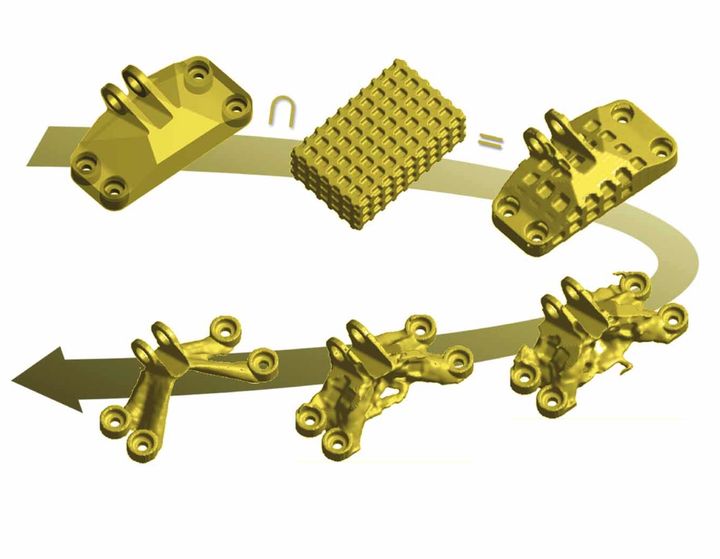
This week’s selection is “Feature-Driven Method for Structural Optimization” by Weihong Zhang and Ying Zhou.
With the advent of 3D printing, there has been a change in the process of design. Unlike traditional making technologies, 3D printing allows a far wider breadth of design possibility due to fewer constraints during making operations.
The opening of this design door has allowed for far more complex and unusual 3D designs. In many cases the designs are so complex they must be generated by computational algorithms, rather than being built manually by a designer in CAD software.
However, the design is always a mixture of functionality with the ability to withstand expected forces and environments. If a part did not, then it would either fail to survive or not perform what it was intended to deliver.
The game, then, is to somehow combine the dual needs of functions and structural optimization, and that’s often challenging.
One model might be the structural analysis model that could be a FEA system, while the functional model might be represented with a CAD model. The issue is how to put the two together.
There are several approaches for achieving this, but in most cases the result is more work than should be necessary, or inconsistencies in post-processing to account for discrepancies.
This book addresses this issue square-on, and it seems there is a solution to this dilemma. They explain:
“The book presents cutting-edge research on advanced structures and introduces the feature-driven structural optimization method by regarding engineering features as basic design primitives. Consequently, it presents a method that allows structural optimization and feature design to be done simultaneously so that feature attributes are preserved throughout the design process.”
Further, the book also proves their approach is successful through numerical modeling.
It seems their process begins with CAD modeling, but breaks the design down into primitives for use in subsequent optimization process steps. It’s an interesting approach that could be quite useful for those designing advanced 3D printable parts.
We’re an Amazon Associate and earn a small fee from qualifying purchases. Help support our 3D print news service by checking out this book!
Via Amazon
